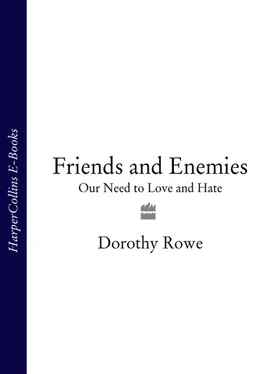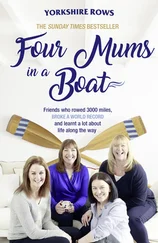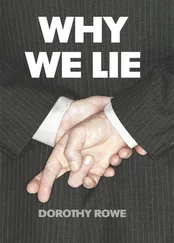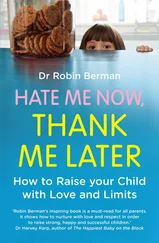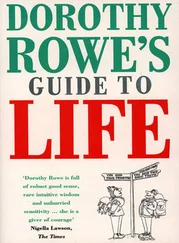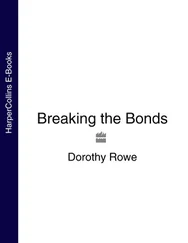Enmity is not the exact opposite of friendship. Friendship must be reciprocal, while enmity need not be. There are many mutual enemies, but the objects of enmity often know nothing of the hate they inspire and may even feel warmly towards the unrecognized enemy. The opposite of friendship – vague interest in the other person – tends to remain the same over time. I have a large number of such relationships, some of them going back thirty years. My feelings about these people has not changed in that time, though I do feel sorry when I learn that one of them has met with disaster or death. I am interested to learn about their progress through life from mutual acquaintances and to meet them occasionally, but I do not pine because I have not seen them.
In contrast, none of my friendships has remained the same over the years. Some friendships have followed the vagaries of each of our lives, some have dwindled and vanished, some have strengthened. None can be taken for granted. Indeed, as Samuel Butler once remarked, ‘Friendship is like money, easier made than kept.’ 1
Like many people, in conversation I use the word ‘friend’ loosely and often apply it to people whom I have merely known for some time. For this study of friendship I have been asking people what words they use in making distinctions between the individuals they know. Some distinguish ‘real friends’ from ‘friends’, and some distinguish friends from acquaintances, colleagues, chums and team members.
Some people make very careful distinctions. I have been told that:
• ‘Friends know me and I know them. We are allies. The next layer are people I like and our paths cross. Then there are the people who cross my path and it’s OK and then those where it’s not OK.’
• ‘I have many acquaintances but few friends. I have people who get close to me – the ones who have the time and interest to listen and who, in return, feel that they can pour their hearts out to me. I feel that there has to be an exchange – give and take. Some only take, therefore they can never be classed as true friends.’
• ‘My categories are: close friends, people with whom I have intimate conversations: professional friends – people I come in contact through work and have special connection with: long-term friends – people I have known for years but don’t see very often; friends in Quakers – people I know and trust through the Society of Friends.’
• ‘I feel friends vary in degrees. I try to approach people as friends. There are always some who are more easy to relate to and they often become a different grade of friend, and over the years these people become more and more important as trust and shared experiences grow.’
Lesley had written to thank me for the help she had received from my books, and I asked her what discriminations she made about friends. She took great care with her reply.
Friends is the word for a relatively small group of people. It is not necessarily related to the length of time I have known them, as I tend to get a particular feeling upon meeting a potential friend. These people in almost every case have remained in my life, even when geography and circumstances dictate that we may not meet for many years, and contact has dwindled to Christmas-time contact.
Acquaintances is a term I reserve for people I have met once or twice with no special feeling. Then there are people I know . I have met them once or twice with no special feelings and know them rather better than acquaintances, I may have known them for years, perhaps coming across them often. There isn’t the degree of feeling or liking that would elevate them to friend category.
Finally there is family . This is a very diverse category. It encompasses people I like, dislike and occasionally hate. There are people in this category I love more than any others. They are my children who are also my friends. It includes my ex-husband, my ex-mother-in-law and sister-in-law. It includes people with whom I have a blood tie but nothing in common. It is the most complicated category.
Such words, as Lesley and the others quoted have shown, require definitions, so I have been asking people how they define friends and friendship.
Children acquire the concept of ‘friend’ early in their life. Alice, who was four, told me about Sarah, also four, who was her friend but who was not always friendly. Alice said, ‘Sometimes, when Sarah comes to my house, she doesn’t let me be the Mummy. We play Mummies and Daddies sometimes.’
I asked, ‘And do you think that’s not being very friendly?’
‘No, I think that’s not very nice.’
‘How many friends have you got?’
‘Loads. I’ve got so many friends I can’t count them. I’ve got Sarah, one, Chloe, two, James, three, Hayden, four, Elliot, five, Thomas, six, Kate, seven, Marcus, eight, Sam, nine.’
‘Do you always play with your friends?’
‘Not all the time. Sometimes they get a bit mardy, and they walk off and they say I don’t want to play with you.’
Alice’s brother Miles, at seven, could define a friend and understand that friendship meant reciprocity. He said, ‘A friend is somebody who would be kind to me and wouldn’t desert me if I hurt myself or was in trouble. It’s somebody who likes you. Sometimes you can like somebody but they don’t like you, but that’s not a real friend.’
Miles also understood that reciprocity did not mean that two friends had to have identical interests. He told me how pleased he was that his friend Arthur, who had gone to another school, was coming back to Miles’s school. I asked him why he was pleased. He said, ‘I’m pleased because he was a good friend. Although he wasn’t interested in all the things I was interested in he was still a very good friend.’
‘So when you were doing something he wasn’t interested in, he was still nice about it?’
‘Yes, but it was more the other way around. He likes sports and I wasn’t really interested.’
When I compared the definitions of friends and friendship which Alice and Miles had given me with the definitions which adults gave me it seemed that as we get older our definitions become more complex, and that many people expect much of their friends.
In a workshop on friends and enemies I asked the participants how they defined a friend. Their answers showed that they saw a friend as someone special.
• ‘A friend should be and do. Be: safe, trustworthy, honest, caring, open. Do: share their feelings with me, accept me, believe in me.’
• ‘A friend should share my sense of humour.’
• ‘A friend will have my welfare at heart and is prepared to accept me as I am and what I want from life, even though he/she may not understand why. A friend needs to be honest with me and open about feelings and opinions even though we differ.’
• ‘I need to feel that in dire circumstances that person would be there for me.’
• ‘I want a friend to hear what I say.’
• ‘A friend – I feel comfortable with and talk, talk, talk and do, do, do, and the time passes without thinking.’
• ‘Someone who will be honest with me but care about my feelings at the same time. Importantly, someone I feel comfortable with, easy with, have fun with.’
• ‘A friend is able to accept things you do for them.’
• ‘They need to tell me, show me, they care for me.’
• ‘We share a similar morality.’
I also asked some of my own friends how they defined a friend. Sometimes their answers surprised me.
I had always thought that Elizabeth and Catherine were close friends. They shared considerable work interests and an extensive social life. Yet Elizabeth said of Catherine, ‘I speak of her as a friend, we do the things friends do, but she is not simpatico.’ Elizabeth went on to point out that simpatico is an Italian term with no equivalent word in English. She contrasted her relationship with Catherine with her relationship with someone she has known since college. This is what she calls ‘eternal friendship’, even though she and her friend now see one another rarely.
Читать дальше
